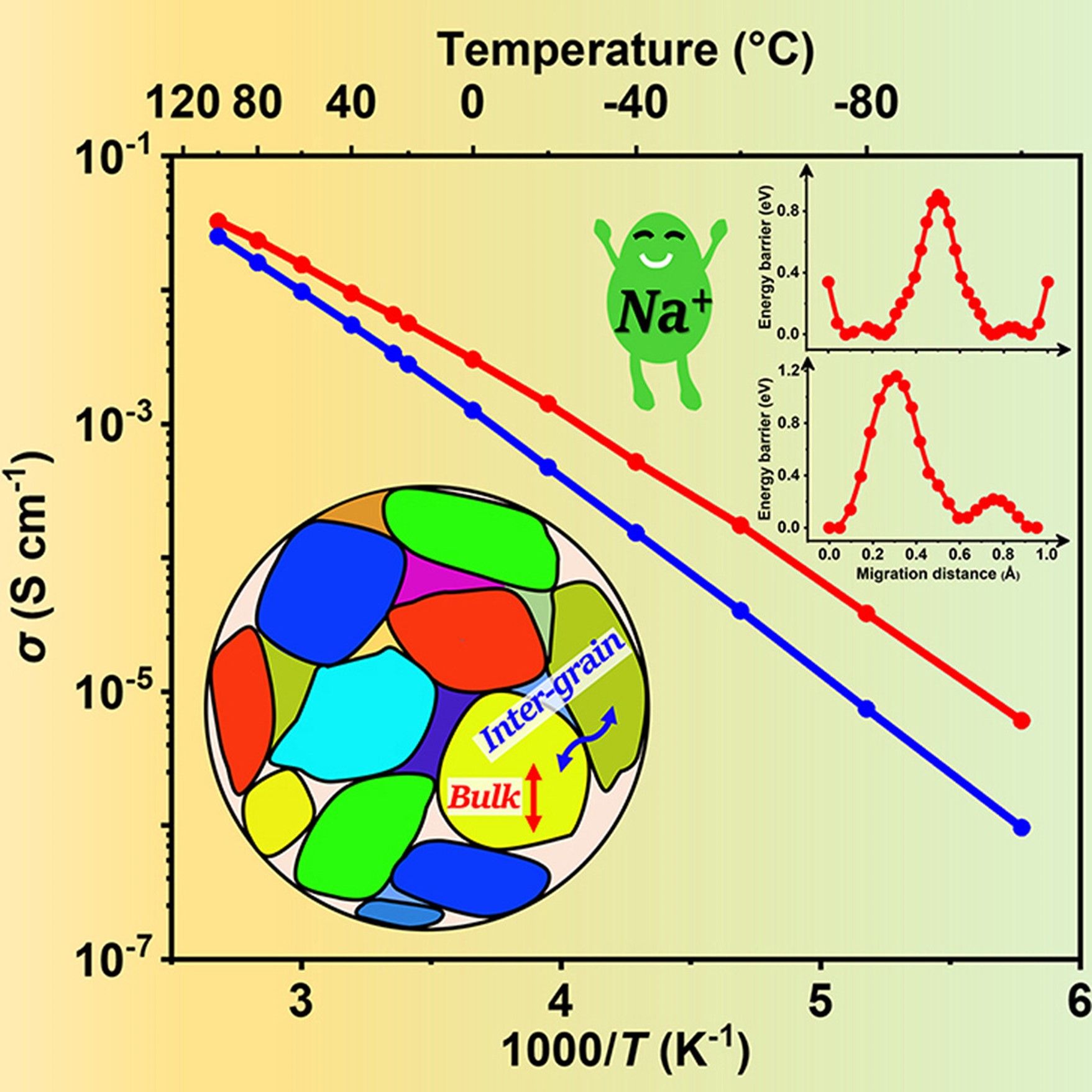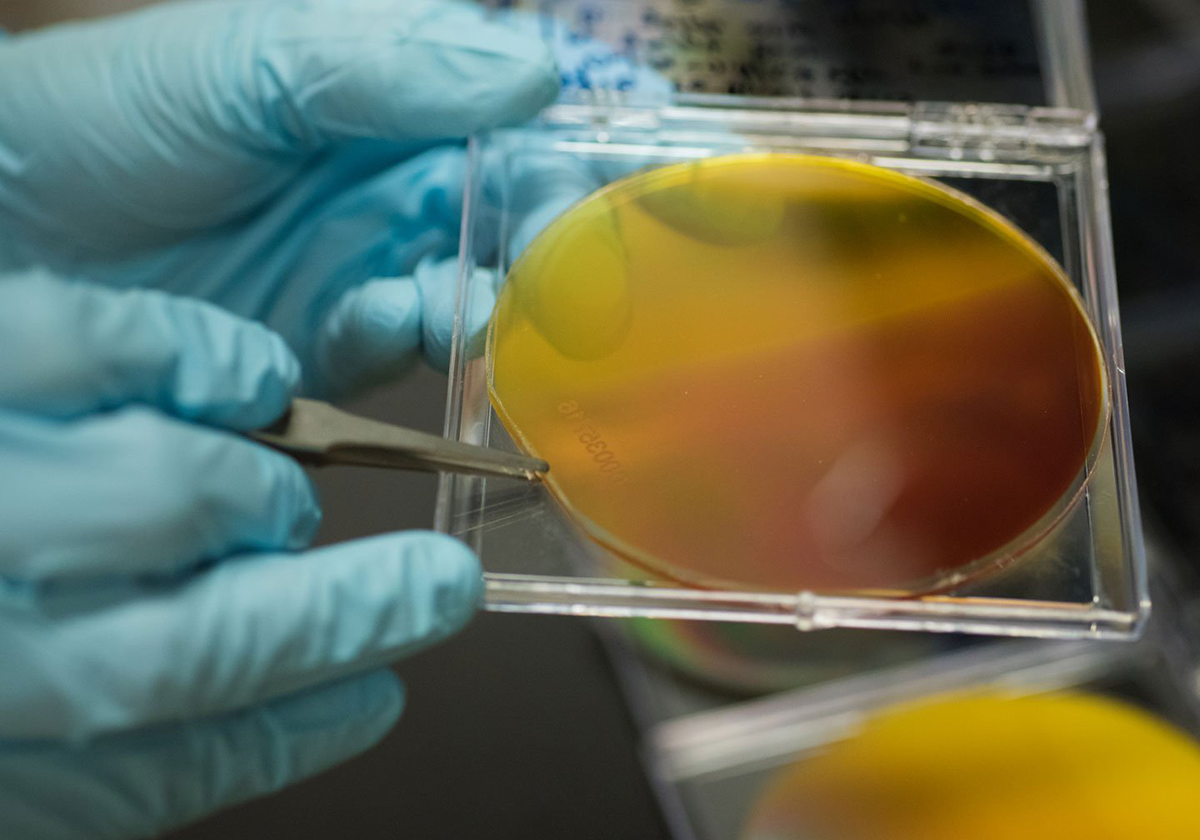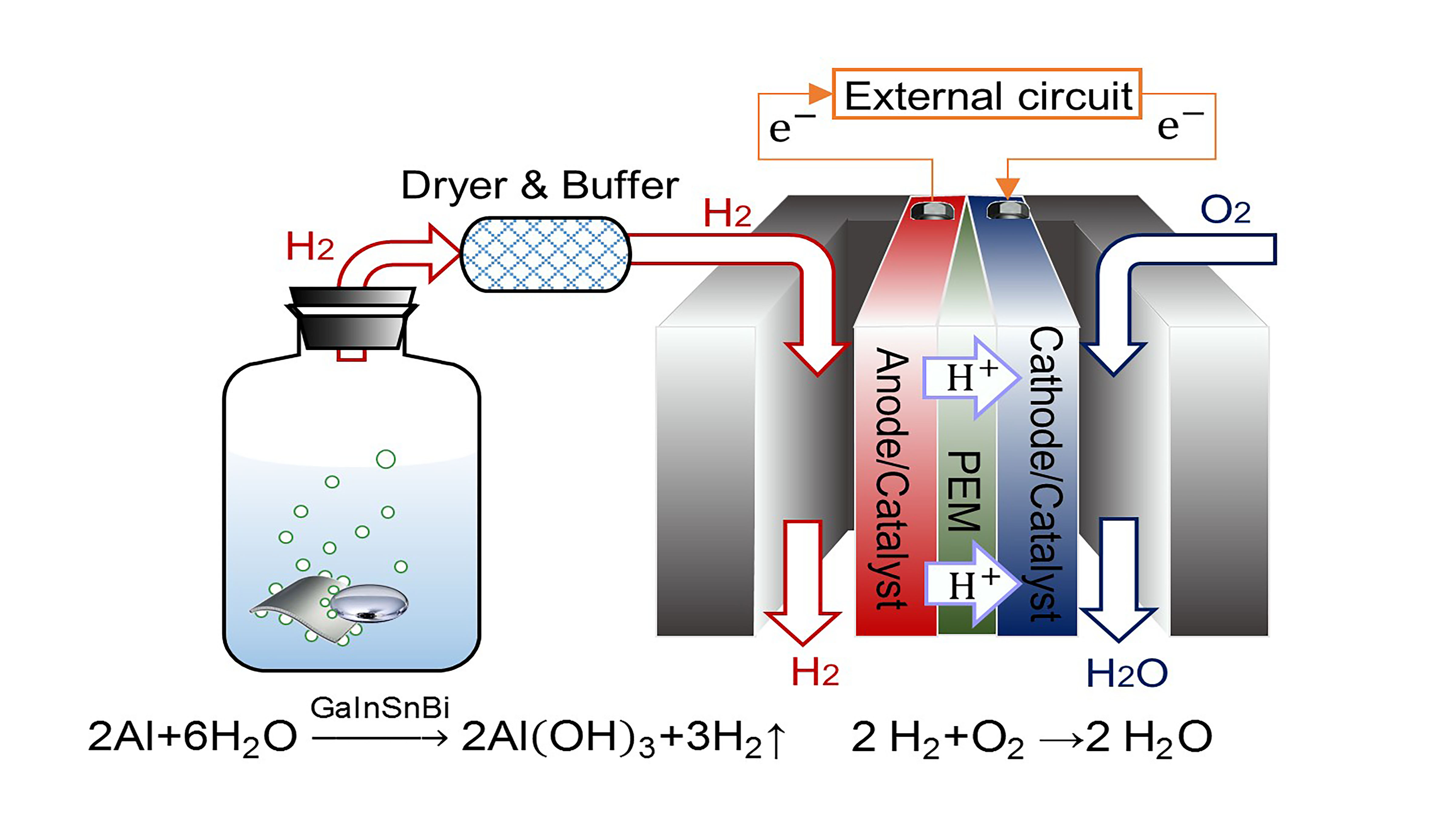The cost effectiveness of wind farms could be significantly improved by reducing the speed of wind turbines that are clustered together, which could improve their longevity and also reduce noise pollution. A team of researchers from the University of Adelaide led by Dr Rey Chin looked at the operation conditions of wind turbines, investigated those conditions relative to power output and performance, and how turbines interact with each other.
Tag: Green Energy

NUS researchers develop new battery-free technology to power electronic devices using ambient radiofrequency signals
Ubiquitous wireless technologies like Wi-Fi, Bluetooth, and 5G rely on radio frequency (RF) signals to send and receive data. A new prototype of an energy harvesting module – developed by a team led by scientists from the National University of Singapore (NUS) – can now convert ambient or ‘waste’ RF signals into direct current (DC) voltage.
Atomically controlled MXenes enable cost-effective green hydrogen production
A research team led by Dr. Albert Sung Soo Lee at Korea Institute of Science and Technology (KIST) with collaboration with Professor Chong Min Koo’s group at Sungkyunkwan University has developed an oxidatively stable molybdenum-based MXene as electrocatalyst support in anion exchange membrane water electrolyzers.

As Paris 2024 Summer Olympic Games approach, experts give tips for athletes, weekend warriors, and travelers
With less than a month until the Summer Olympic Games in Paris, and with Olympic Trials taking place all around the world in different sports, Virginia Tech experts offer perspective on aspects of the competitions, applying Olympic habits to our own lives, and how the Games are impacting both travel to and life on the ground in Paris.
Synergy of green energy technologies through critical materials circularity
Abstract Synergies between technology flows is essential to balance the consumption of their related critical materials and promote a sustainable green economy transition. Using dynamics modelling, a comprehensive analysis of silicon flows applied in green energy technologies such as photovoltaic…
Harnessing Green Energy from Plants Depends on Their Circadian Rhythms
Plant hydraulics drive the biological process that moves fluids from roots to plant stems and leaves, creating streaming electric potential, or voltage, in the process.

New Sodium-ion battery tech boosts green energy storage affordability
In significant advances for energy-storage technologies, researchers have developed high–ionic-conductivity solid-state electrolytes for sodium-ion batteries that dramatically enhances at room temperature. This breakthrough not only paves the way for more efficient and affordable energy storage solutions but also strengthens the viability of sodium-ion batteries as a sustainable alternative to traditional lithium-ion systems.
‘Time is now’ to enforce big building emissions regulations in NYC
Local Law 97 is a topic of big debate in New York City, as it works to limit fossil fuel emissions of large buildings. A public hearing on the law drew a big crowd to discuss how the regulations should…
Society’s Involvement Is Key in Advancing the Green Energy Transition
Addressing climate change isn’t just a technical issue; it’s a societal one. A recent article in Nature Energy highlights the increasing urgency for engineers and social scientists to combine their expertise.
Early career scientist wins prestigious Hungarian physics award
Laszlo Horvath, an early career physicist at PPPL, is the winner of the 2022 Károly Simonyi Memorial Plaque from the Hungarian Nuclear Society.

Chula’s Pledge to Be Net Zero – Chula Unveiled 5 Key Strategies to Become the “University with Net Zero Carbon Emissions” by 2050
Chula President pledged to move ahead with greenhouse gas reduction on the Chulalongkorn University campus targeting Net Zero Greenhouse Gas Emission by 2050 and unveiled 5 pilot strategies for minimizing carbon dioxide emissions and also achieving campus sustainability.
Cactus Plant Inspires Cost-Effective Hydrogen Production
Low-cost 3D material paves the way for cost-effective clean energy production
‘Green’ energy patents more focused on ‘clean’ conventional energy instead of renewables
A new study by world leaders in patent data has revealed some unusual trends in energy tech R&D, questioning whether companies are more committed to extracting fossil fuels or in pursuing genuinely ‘green’, renewable energy technologies.
Storing hydrogen fuel in salts — a step toward ‘cleaner’ energy production
Hydrogen gas could someday replace fossil fuels as a “clean” energy source, producing only water and energy. Now, researchers reporting in ACS Central Science have developed a method to store and release highly pure hydrogen with salts in the presence of amino acids.
The Race is On: Nevada is in the Driver’s Seat for Burgeoning Lithium Industry. UNLV economic geologist talks lithium battery supply chain, green energy, and self-sustainability
The ‘Lithium-Ion Battery State’ may not have the same ring to it as ‘Battle-Born’ or ‘Silver State,’ but the reality is that Nevada could soon be a leader in the lithium battery supply chain – potentially giving the U.S. an edge in the arms race for the in-demand metal that’s the key to powering everything from your cell phone to electric vehicles.
Floating ‘artificial leaves’ ride the wave of clean fuel production
Researchers have developed floating ‘artificial leaves’ that generate clean fuels from sunlight and water, and could eventually operate on a large scale at sea.

Mighty Oak Monday: Twiggy Hamilton
Twiggy Hamilton had a long road to get to where she is today. Unsure of how to navigate the college process, she instead entered the workforce after high school and moved to Chicago.
New method for enabling a more reliable electric grid
Case Western Reserve University chemical engineers are working on a new generation of smaller, safer and less expensive batteries they say could allow electrical energy to be stored four times longer.
Delivering Clean Power to Disaster Scenes, Without Compromise
The H2Rescue is an innovative new truck that can bring power to a disaster scene, with zero emissions.
Steering Wind Turbines Creates Greater Energy Potential
For wind farms, it is important to control upstream turbines in an efficient manner so downstream turbines are not adversely affected by upstream wake effects. In the Journal of Renewable and Sustainable Energy, researchers show that by designing controllers based on viewing the wind farm system as a coupled network, it is possible to extract power more efficiently.
Pathways clear for decarbonising heavy industry
The production of green steel will be a critical step to enable the world’s heavy industry to reduce its greenhouse gas emissions and Australia is well placed to be an important player in this space.

Is battery recycling environmentally friendly?
In a new study, researchers at Aalto University have investigated the environmental effects of a hydrometallurgical recycling process for electric car batteries. The carbon footprint of the raw material obtained by the recycling process studied is 38% smaller than that of the virgin raw material. The difference is even greater if copper and aluminium recovered during mechanical pre-treatment are included.

Smart Devices to Schedule Electricity Use May Prevent Blackouts
Power plants generate electricity and send it into power lines that distribute energy to nodes where it can be used. But if the electricity load is more than the system’s capacity, transmission can fail, leading to a cascade of failures throughout the electric grid. In the journal Chaos, researchers show demand side control may be an effective solution to stabilizing the reliability of power grids that use a mix of energy generation sources.

Scientists Capture Candid Snapshots of Electrons Harvesting Light at the Atomic Scale
A team of scientists led by Berkeley Lab has gained important new insight into electrons’ role in the harvesting of light in artificial photosynthesis systems.
‘Overarching concern’ for new EU green bonds: investor appetite
The European Union is poised to create 225 billion euros of green debt by sharply increasing the number of available green bonds to support clean energy growth. Andrew Karolyi is a professor of finance and economics at the Cornell University…

Berkeley Lab Part of Multi-Institutional Team Awarded $60M for Solar Fuels Research
The Department of Energy has awarded $60 million to a new solar fuels initiative – called the Liquid Sunlight Alliance (LiSA) – led by Caltech in close partnership with Berkeley Lab. LiSA will build on the foundational work of the Joint Center for Artificial Photosynthesis (JCAP).

The Electrochemical Society and Toyota Motor Engineering & Manufacturing North America, Inc. Announce 2020-2021 Fellowship Winners for Projects in Green Energy Technology
Prof. Dr. Shoji Hall, Prof. Dr. Piran Ravichandran Kidambi, and Dr. Haegyeom Kim have been awarded the 2020-2021 ECS Toyota Young Investigator Fellowships. Through this, ECS and Toyota aim to promote innovative and unconventional technologies borne from electrochemical research. The fellowship encourages young professors and scholars to pursue innovative electrochemical research in green energy technology.

Instant Hydrogen Production for Powering Fuel Cells
Due to its affordability and environmental friendliness, hydrogen is a feasible alternative to fossil fuels for energy applications. However, due to its low density, hydrogen is difficult to transport efficiently, and many on-board hydrogen generation methods are
slow and energy intensive.
New Investments and Research Indicate Multi-Trillion Dollar Market for Climate Restoration Through Carbon-Capture
Climate restoration is the global movement to remove the trillion tons of excess CO2 from the atmosphere to restore our air to preindustrial levels of carbon dioxide and to preserve the Arctic ice. Given the climate emergency, climate restoration is a critical third pillar of climate action, complementing ongoing mitigation and adaptation efforts. New technologies and natural solutions for reducing CO2 levels in the next 30 years already exist and the costs for global-scale implementation are projected to be less than 1-3% of the global annual GDP.
New Investments and Research Indicate Multi-Trillion Dollar Market for Climate Restoration Through Carbon-Capture
Climate restoration is the global movement to remove the trillion tons of excess CO2 from the atmosphere to restore our air to preindustrial levels of carbon dioxide and to preserve the Arctic ice. Given the climate emergency, climate restoration is a critical third pillar of climate action, complementing ongoing mitigation and adaptation efforts. New technologies and natural solutions for reducing CO2 levels in the next 30 years already exist and the costs for global-scale implementation are projected to be less than 1-3% of the global annual GDP.

How to Make it Easier to Turn Plant Waste into Biofuels
Researchers have developed a new process that could make it much cheaper to produce biofuels such as ethanol from plant waste and reduce reliance on fossil fuels. Their approach, featuring an ammonia-salt based solvent that rapidly turns plant fibers into sugars needed to make ethanol, works well at close to room temperature, unlike conventional processes, according to a Rutgers-led study in the journal Green Chemistry.
First Solar Energy System to Split Water into Hydrogen and Oxygen at Separate Sites
Researchers have developed a prototype system for efficient and safe production of hydrogen using only solar energy. The innovative system contains a tandem cell solar device that enables more efficient utilization of the light spectrum.
To rid electric grid of carbon, shore up green energy support
Cornell and Northwestern University engineers, along with a federal economist, have created an energy model that helps to remove carbon-generated power from the U.S. electric grid – replacing it with a greener, financially feasible wind, solar and hydro energy system.